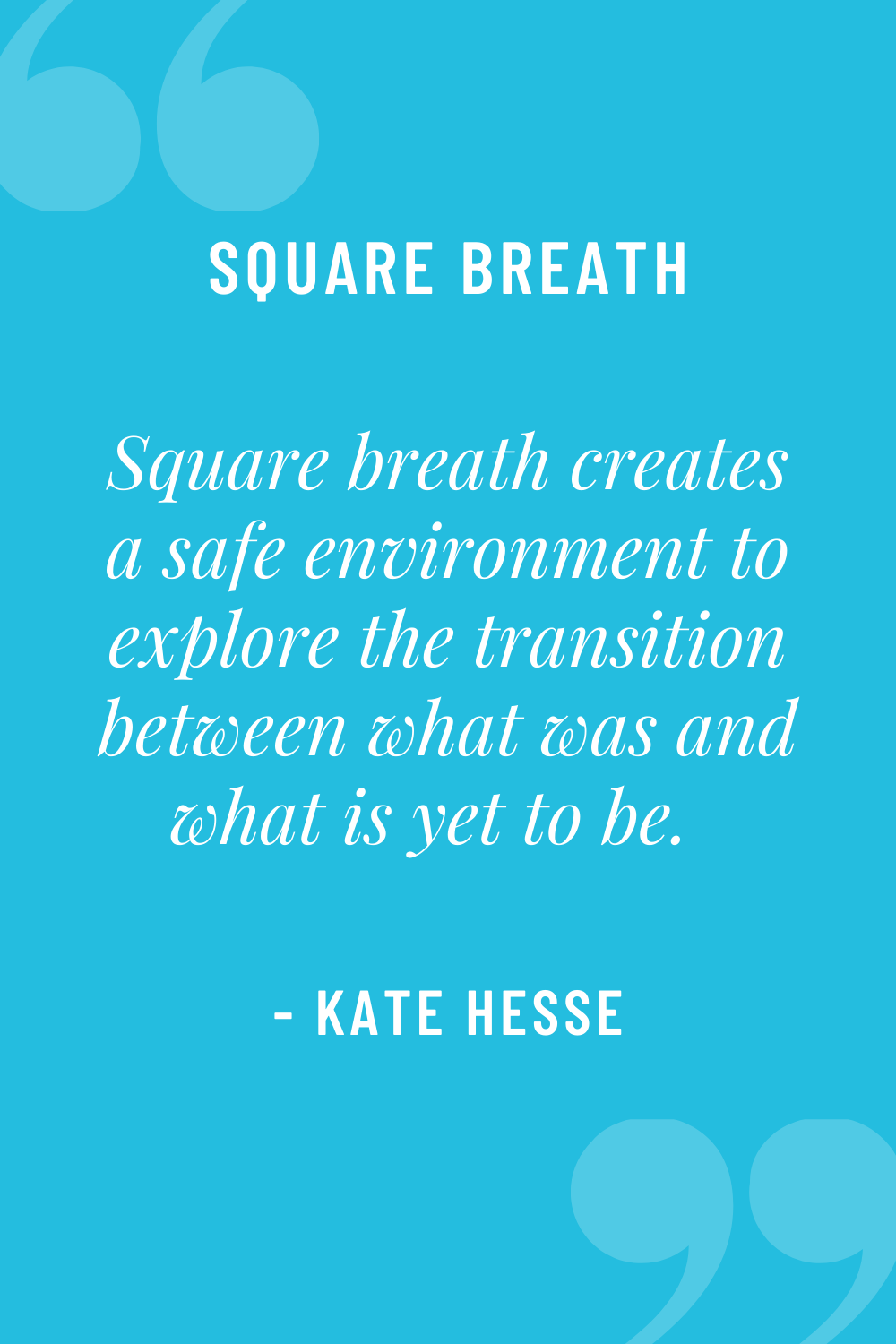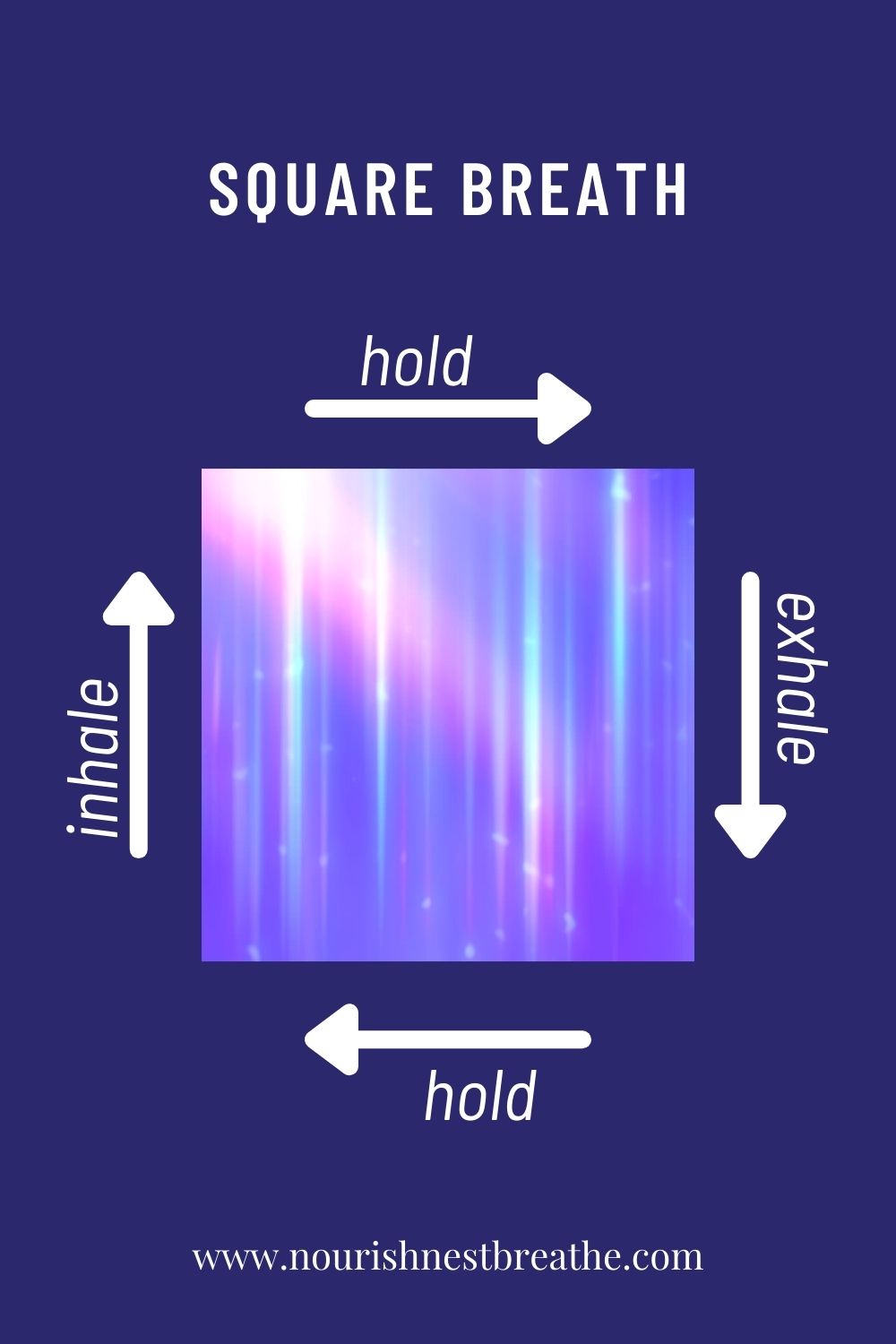
 One of my favorite pranayama, or breathwork techniques, is Square Breath, a variation on Sama Vritti.
One of my favorite pranayama, or breathwork techniques, is Square Breath, a variation on Sama Vritti.
If you missed my post on Sama Vritti, check it out here for both the guided audio and information on why Sama Vritti is so important!
If you’re new to breathwork, please practice the technique in the Sama Vritti post first. In Square Breath, we’re not only creating a balance of equal inhales and exhales, we’re also incorporating a breath retention.
Although it requires slightly more breath control than some of the pranayama I usually talk about, it is still a simple technique.
Why I love Square Breath
Square Breath offers the opportunity to focus on bringing balance to your body through equal measures of inhalation and exhalation. This is a great practice if you’re feeling out of balance in any way.
Square breath also requires just enough attention that it helps to keep your mind focused in the present moment. If you’re feeling easily distracted or your mind is running a million miles a minute, this pranayama will help you refocus back into the present moment and slow your racing mind.
And just like many of the pranayama I talk about, square breath is able to pull you from the Sympathetic Nervous System (fight, flight, or freeze) into the Parasympathetic Nervous System (rest & digest), making this a great practice anytime you’re feeling anxious or overwhelmed.
Taking the pranayama off the mat
I love the lessons I’ve learned from this breathwork practice on finding ease with the in between.
Here’s a little secret you might not know.
While I deal with change well – adapting to the new normal once it’s been established – I struggle with transitions – that in between period where you’re neither here nor there.
With Square Breath I can create a safe environment to explore those transitions.
Sitting for several counts with the space between inhale and exhale and the space between exhale and inhale brings focus to the transition point.
By exploring that space on the mat, I’ve learned that I’m safe – even if the transitions feel scary. And I can take that knowledge off the mat into my everyday life.
While I still sit uneasily in a time of transition, this practice helps me remember I’m safe while exploring that in between space.
Square Breath Step-by-Step
 To practice Square Breath, use the guided audio below, or guide yourself through the practice with the following instructions.
To practice Square Breath, use the guided audio below, or guide yourself through the practice with the following instructions.
Find a comfortable seated position, and bring your attention to your breath.
Begin to bring balance to your breath, finding an equal count for the inhalations and exhalations. Then begin to add the other two edges of the square.
You will inhale, retain the breath, exhale, and hold out the breath. Find a balance between all four edges of the square with an equal count that’s comfortable in your body.
You might find that you need to shorten your inhales and exhales based on what feels comfortable for the breath retention portion of the pranayama.
There should not be strain in this breathwork. If you find you’re struggling during any edge of the square, shorten your count by one until you reach a comfortable count for your body.
Square Breath Guided Audio
Try practicing this pranayama for 3-5 minutes. Set a timer and allow yourself to focus on the breathing. If you struggle with keeping a consistent pace in your counting, I suggest an app like Dharma Timer Counter Lite (no affiliation, just a fan), and setting the chimes to a comfortable rate for your breath.
Contraindications for this breathwork
While I love this pranayama, it’s important to remember that we’re not cookie cutter humans and what works for one person may not be right for another. Also, what’s worked for you in the past, might not be right for you in the present moment.
If at any point you feel light headed, discontinue the breathwork immediately and return to your normal breath pattern. Additionally, any breathwork practices which require breath retention (either holding the breath in or out) are not recommended for pregnant women, those who have eye or ear problems, and those with high blood pressure.
Finally, breath retention can be triggering for those who suffer from anxiety or who are working with active trauma (either big or little t). If this applies to you, but you would like to experiment with this breathwork, I suggest you begin with just one count of breath retention at the end of the inhale and exhale for your first practice.
Add in one additional count each time you practice this breath until you reach a point where you have equal counts. If at any point this practice becomes triggering, please discontinue the breathwork and return to your normal breathing.
Wishing you ease and balance in all moments.
Are you ready to bring a greater sense of ease and calm to your life?
This pranayama is a great start, but I’d love to help you create a game plan to build a life filled with freedom, serenity, resilience, and joy – schedule a no-cost Discovery Session with me today to learn more!
Related
Leave a Reply Cancel reply
This site uses Akismet to reduce spam. Learn how your comment data is processed.